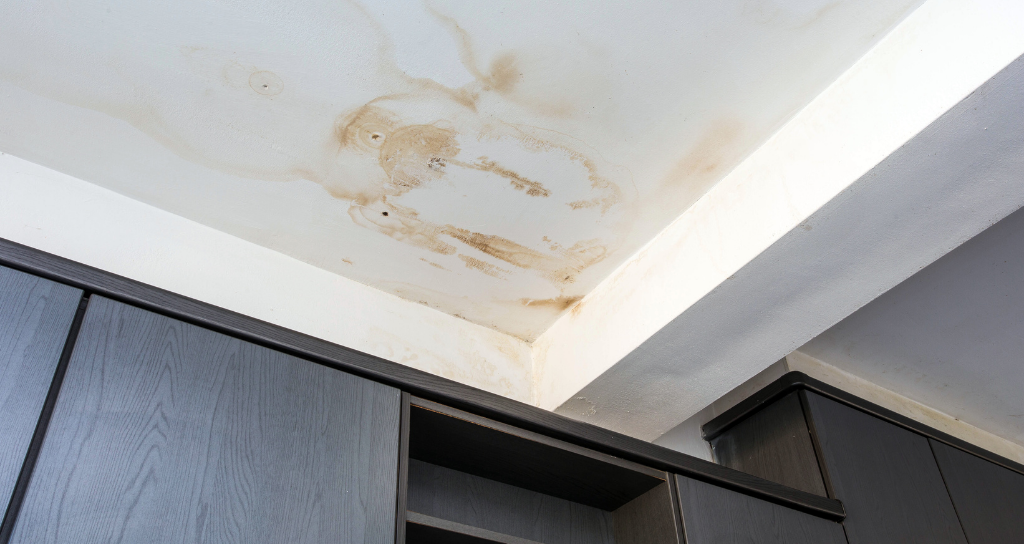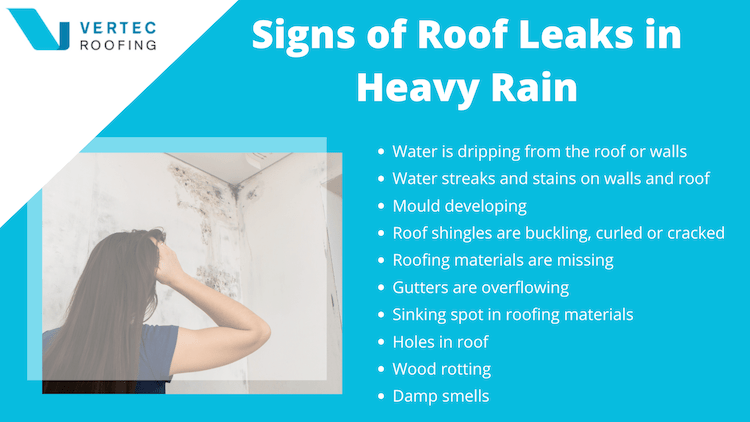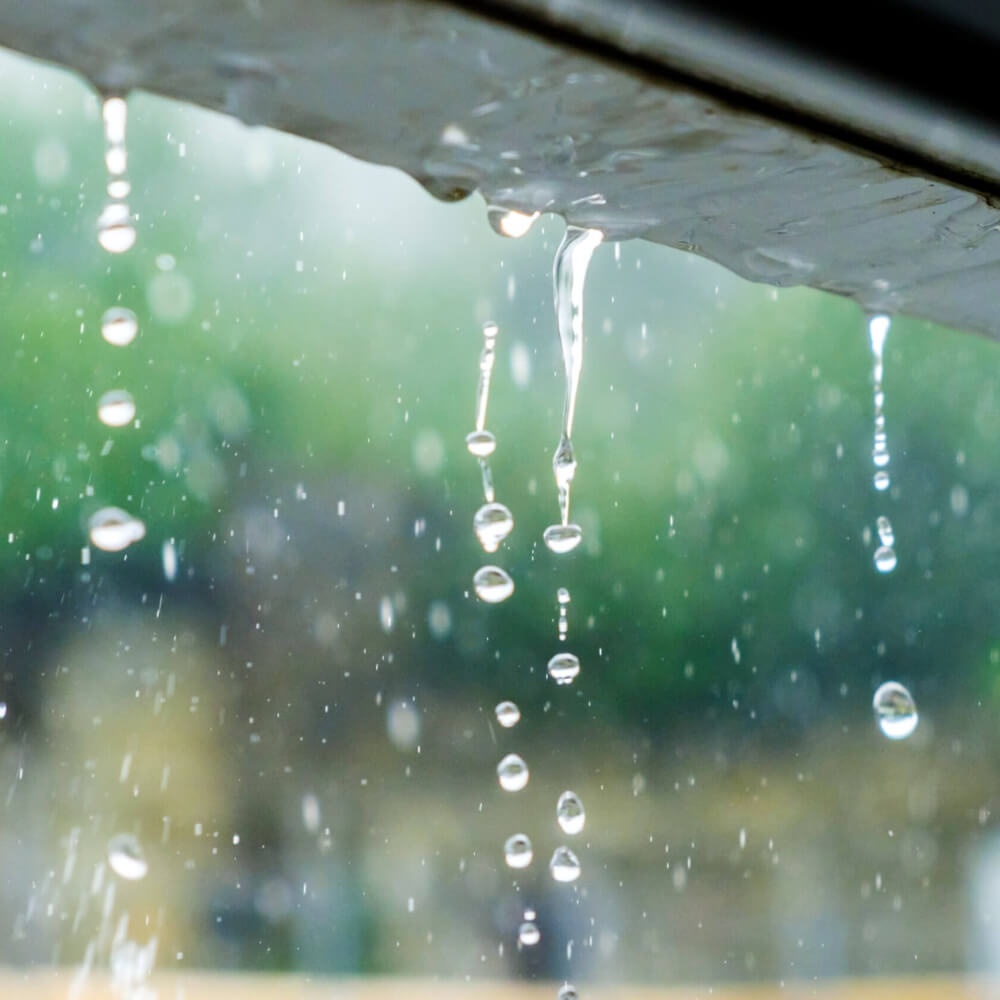In this article, you will learn effective techniques to prevent water from seeping through your ceiling during rainy weather. Discover the underlying causes of this issue, and gain insight into the crucial steps you need to take in order to address and resolve it. By implementing these preventive measures, you can safeguard your home from water damage, ultimately ensuring a safe and dry living environment.

This image is property of www.midshoreexteriors.com.
Why is water coming through my ceiling when it rains?
Experiencing water coming through your ceiling when it rains can be a frustrating and worrying issue. This problem can lead to significant damage to your home’s infrastructure if not addressed promptly. To prevent further damage and eliminate the source of the water infiltration, it is essential to take a systematic approach to identify the cause and implement appropriate solutions. This article will guide you through the necessary steps to resolve the issue effectively.
Roof Inspection
The first step in addressing water infiltration through the ceiling is conducting a thorough roof inspection. The roof is often the primary entry point for water during rainstorms, so it is crucial to identify any visible damage or vulnerabilities. Here are some key aspects to consider during your inspection:
Check for any visible damage
Inspect your roof for any visible signs of damage, such as cracks, holes, or missing tiles. Even minor damage can provide an entry point for water, so it is essential to address these issues promptly.
Look for missing or damaged shingles
Shingles play a critical role in protecting your roof from water infiltration. Check for any missing or damaged shingles that could be allowing water to seep through. If shingles are missing or in poor condition, they should be replaced promptly.
Inspect the flashings
Flashings are metal strips installed around roof penetrations, such as chimneys and vents, to prevent water from entering. Check the flashings for any signs of damage, deterioration, or improper installation. Repair or replace them as necessary.
Check the condition of the gutters and downspouts
Properly functioning gutters and downspouts are essential for directing water away from your roof and foundation. Inspect them for clogs, leaks, or any other issues that could be causing water to back up onto your roof. Clear debris and ensure that the gutters are securely attached to the roofline.

This image is property of vertecroofing.com.au.
Seal Gaps and Cracks
Identifying and sealing any gaps or cracks in your roof can significantly reduce the chances of water infiltration. Here’s what you need to do:
Identify and mark all gaps and cracks
Carefully inspect the roof for any gaps or cracks where water might be entering. Mark these areas to ensure they are addressed properly during the sealing process.
Clean the areas to be sealed
Before applying sealant, it is crucial to clean the areas to be sealed thoroughly. Remove any debris, dirt, or loose material around the gaps and cracks to promote proper adhesion of the sealant.
Apply sealant to the identified gaps and cracks
Once the areas are clean, apply an appropriate roof sealant to the gaps and cracks. Ensure that the sealant is applied evenly and covers the entire affected area. Follow the manufacturer’s instructions for application and drying time.
Ensure proper drying and curing of the sealant
Allow the sealant sufficient time to dry and cure before exposing it to moisture. This will ensure its effectiveness in preventing water infiltration. Be mindful of weather conditions and avoid any activities that might disrupt or damage the sealant during the drying period.
Repair or Replace Damaged Shingles
If damaged shingles are contributing to the water infiltration, it is crucial to repair or replace them promptly. Follow these steps to address this issue:
Identify and mark the damaged shingles
Inspect the roof and identify the specific shingles that are damaged or causing water infiltration. Mark these shingles for replacement.
Remove the damaged shingles
Carefully remove the damaged shingles using a pry bar or other suitable tools. Take caution not to cause further damage to the surrounding shingles or roof structure during this process.
Replace with new shingles
Once the damaged shingles are removed, replace them with new shingles of the same type and size. Ensure they are securely attached and properly aligned with the surrounding shingles.
Secure the new shingles properly
Use roofing nails or other appropriate fasteners to secure the new shingles in place. Follow proper installation techniques to ensure a tight and reliable fit. If needed, consult a professional roofer for assistance with this task.

This image is property of i.stack.imgur.com.
Clear Debris from Gutters and Downspouts
Blocked gutters and downspouts can lead to water pooling on your roof, increasing the risk of water infiltration. Here’s how you can prevent this:
Inspect gutters and downspouts for any debris
Regularly inspect your gutters and downspouts for any signs of debris accumulation. Leaves, twigs, and other debris can quickly clog the system and prevent proper drainage.
Remove leaves, twigs, and other debris
Clear any accumulated debris from the gutters and downspouts using a scoop or gloved hands. Ensure that all obstructions are removed to allow for unimpeded water flow.
Flush the gutters and downspouts with water
After removing the debris, flush the gutters and downspouts with water to ensure there are no remaining blockages or restrictions. This will help you identify any underlying issues that may require further attention.
Consider installing gutter guards
To prevent future debris accumulation, consider installing gutter guards. These devices act as a barrier, preventing leaves and other debris from entering the gutters while allowing water to flow freely. Consult a professional for guidance on selecting the appropriate gutter guards for your specific needs.
Improve Attic Ventilation
Proper attic ventilation is essential for maintaining a healthy roof and preventing water infiltration. Follow these steps to improve your attic ventilation:
Check the attic ventilation system
Inspect your attic ventilation system, including soffit vents, ridge vents, and gable vents. Ensure that they are clean, unobstructed, and functioning correctly.
Ensure proper airflow and vent openings
Make sure that there is proper airflow throughout the attic space, with vents positioned strategically to facilitate air circulation. Clear any obstructions that might restrict air movement, such as insulation or stored belongings.
Install additional vents if needed
If your attic does not have adequate ventilation, consider installing additional vents. This can help reduce moisture buildup and decrease the chances of water infiltration through the ceiling.
Consider using attic fans
Attic fans can further improve ventilation by increasing air circulation and removing excess humidity. They help control attic temperature and reduce the risk of condensation, which can lead to water damage. Consult an expert to determine the appropriate fan size and placement for your attic.

This image is property of lakecountytn.com.
Apply Waterproofing Treatment
To enhance your roof’s resistance to water infiltration, you can apply a waterproofing treatment. Follow these steps:
Identify areas prone to water infiltration
Carefully inspect your roof and ceiling for areas that are particularly susceptible to water infiltration, such as low-lying sections, joints, or areas with previous leaks.
Clean and prepare the areas to be treated
Thoroughly clean the identified areas to remove any dirt, dust, or previous sealant residue. Ensure that the surface is dry and free from any moisture.
Apply waterproofing sealant or coating
Using a suitable waterproofing sealant or coating, apply a generous and even layer over the areas prone to water infiltration. Follow the manufacturer’s instructions for application and drying time.
Monitor and reapply as necessary
Regularly monitor the treated areas to ensure the effectiveness of the waterproofing treatment. If you notice any signs of deterioration or water infiltration, promptly reapply the sealant or coating as necessary.
Check for Plumbing Leaks
Water infiltration through the ceiling may not always be caused by roof-related issues. Plumbing leaks can also be a potential source. Follow these steps to check for plumbing leaks:
Inspect plumbing fixtures and pipes
Carefully inspect all plumbing fixtures, such as sinks, toilets, showers, and pipes, for any signs of leaks or water damage. Look for water stains, mold growth, or a noticeable increase in water usage.
Look for signs of leaks or water damage
If you find any visible signs of leaks or water damage around plumbing fixtures or pipes, it is essential to address the issue promptly. Ignoring plumbing leaks can lead to further damage and exacerbate the water infiltration problem.
Repair or replace any damaged plumbing components
If you identify any damaged or malfunctioning plumbing components, such as cracked pipes or faulty valves, they should be repaired or replaced. Consult a professional plumber if you are unsure about performing these repairs yourself.

This image is property of mccoyroofing.com.
Improve Exterior Drainage
Proper exterior drainage is crucial for preventing water infiltration into your home. Follow these steps to enhance your exterior drainage:
Ensure proper slope and grading around the house
Check the slope and grading around your house to ensure that it directs water away from the foundation. The ground should slope downwards, allowing rainwater to naturally flow away from the building.
Install or repair drainage systems
If your property experiences frequent water pooling or drainage issues, consider installing or repairing drainage systems. French drains, catch basins, or underground pipes can effectively collect and redirect excess water.
Redirect rainwater away from the foundation
Ensure that downspouts and gutters are properly installed and functioning correctly. Direct the rainwater away from your foundation by extending downspouts or using splash blocks, concrete troughs, or rain barrels.
Consult a Professional
Sometimes, despite your best efforts, the water infiltration issue persists or proves to be too complex to resolve on your own. In such cases, it is highly recommended to consult a professional roofer or contractor who specializes in addressing water infiltration and roof-related issues. An expert will be able to assess the situation, provide tailored recommendations, and perform the necessary repairs or improvements.
If all DIY efforts fail
If your attempts to resolve the water infiltration issue through DIY methods have been unsuccessful, it is best to seek professional assistance. Continuing to address the problem yourself without the necessary expertise can potentially worsen the situation or lead to further damage and costly repairs.
Hire a professional roofer or contractor
When choosing a professional roofer or contractor, look for reputable individuals or companies with experience in addressing water infiltration issues. Conduct thorough research, read customer reviews, and request references to ensure you are hiring a reliable and skilled professional.
Get expert advice and recommendations
Engaging a professional can provide valuable insights into the cause of the water infiltration and the most effective solutions. They can offer expert advice and recommendations specific to your situation, ensuring that the issue is resolved in a comprehensive and long-lasting manner.
In conclusion, water coming through your ceiling when it rains is a problem that requires prompt attention and proper resolution. By following the steps outlined in this article, conducting a thorough roof inspection, sealing gaps and cracks, repairing or replacing damaged shingles, clearing debris from gutters and downspouts, improving attic ventilation, applying waterproofing treatment, checking for plumbing leaks, improving exterior drainage, and consulting a professional when necessary, you can effectively eliminate water infiltration and protect your home from further damage. Remember, taking a proactive approach to address water infiltration is essential to maintain the integrity of your roof, ceiling, and overall home structure.
